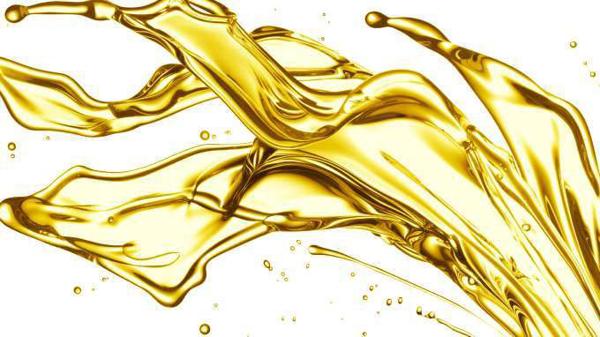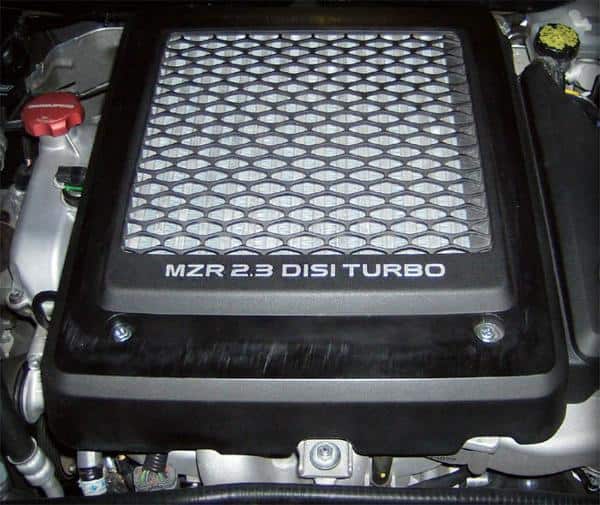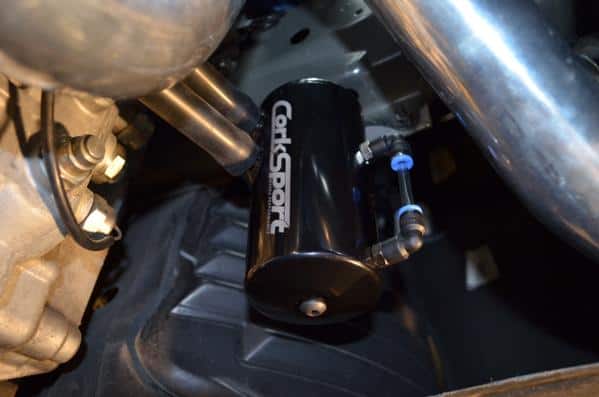Caring for your Mazda DISI engine
Direct injection engines are nothing new… for diesel lovers. The application of direct injection in gasoline engines in large volume is a much newer feat however. As far back as 1902, manufacturers have tried to inject gasoline directly into the cylinder, companies such as: Mercedes, Ford, AMC and many others all tried to perfect the technology. Ironically, the first company to roll out gasoline direct injection cars en mass was Mitsubishi. The long story short version is now most manufacturers offer a direct injection engine or many. The technology is extremely versatile in adding power, improving gas mileage, fine tuning and in many other areas.
Who Cares?
So with all the hoopla surrounding direct injection technology why isn’t it in every car? Well, there are a few reasons.
1. Technology is expensive, DI engines require new heads, cams, and many more additional pieces of equipment.
2. The process is proven but un-proven.
3. Change, many auto companies can be slow to adopt newer technology.
With DI engines being the future, why are we talking about them? Well, there are certain problems that many are seeing as a direct result of this technology. The main issue revolves around the intake and the intake valves. In traditional engines, fuel is sprayed outside the combustion chamber into the intake manifold and passes the valves on the way to the chamber. The detergents in modern gasoline help clean the intake tract and the valves and can help prevent deposits left from debris or from the EGR system. With direct injection technology, the injector is directly in the combustion chamber and the gas does nothing but get instantly atomized and ignited. As such, we are seeing common failures in DI engines, there are two key steps you can take to prevent these build ups and increase the power and longevity of your engine.
The first is quality oil. With any modern engine, we recommend a synthetic oil. The benefits far outweigh the costs and in many cases you can actually save money in the long run with longer oil change intervals and fewer mechanical issues as a result of the better protection.

All synthetic oils are not created equal. Here in America we are at a disadvantage as to knowing what oils are synthetic and which are not. Due to a loophole in regulations and advertising, companies in America can advertise their group 3 oils (which start life as gasoline and are turned to liquid via hydrocracking) as fully synthetic. Many of these oils such as Royal Purple, Castrol Syntec, Mobil 1 cannot be called synthetic in other parts of the world where these things are taken much more seriously. As such, we recommend group 4 and group 5 oils exclusively. Many oils like Redline, ELF (Total), Amsoil, Torco, and Castrol formulations from Europe are all good examples of this. These oils are so important that every Volkswagen company (VW, Audi, Porsche, Bentley, Lamborghini, etc.) REQUIRE their dealerships to use them exclusively. So when in doubt, you can always have your oil changed at one of those dealerships to make sure you are getting the best quality oil.
What You Can Do
The second way you can care for your direct injected engine is to use an oil catch can. Modern engines have to use EGR systems. EGR stands for exhaust gas recirculation. The basic purpose of EGR is to reduce nitrogen oxide emissions and it works by recirculating a portion of the engines exhaust gas back into the intake to be “burned” again. The unfortunate byproduct of this set up is that many of the things in your exhaust you do not want going in your engine. Unburned gas vapor, burned oil vapor, water contaminated with other different chemical compounds are just a few of the terrible things EGR can introduce back into your engine.
With the installation of an oil catch can, you can capture many of those contaminates and dispose of them before they ever get to the engine you’ve spent so much money on. The gains are easy to see every time you empty it.
So there you have it; to keep your DISI Mazda running strong and trouble free, follow those simple tips and you’ll have a long and happy life together.




This is awesome! Thank for this!
Why is your catch can made for the EGR? Just curious, as blowby is vented through the PCV system. Should it not be filtering the recirculated air from the crankcase?
Very interesting. I’ve fortunately been using “German” Castrol 0W-30 (‘Made in Germany’ on the back label) since I bought my Speed6 new in August of 2006. As far as the oil catch can…I’ll have to look into that! But what is the considered opinion of CorkSport on the upsides/benefits of retro-fitting the DISI engine with the spin-on oil filter housing to replace the OEM canister filter housing…and then using a larger spin-on oil filter? Thoughts?
How do you not consider that Royal Purple is not a synthetic? I use it religiously in my car and its actually repaired and smoothed out many of the scaring left from using none synthetic oil. Not to mention their oil is (on molecular level) much more stable then most other oils. They remove contaminates from the oils. No oil is a “synthetic” oil in literal terms. Its about the removal of contaminates and realigning the oil on a molecular level to be more stable (as previously mentioned). I have been working on cars for about 12 years and have studied many sources on the differences in types of oil. I will not use anything but Royal Purple and I will always recommend it to others. I have seen the proof of its abilities.
They didn’t say it wasn’t good just informing people that there is higher quality available. Personally I use amsoil in both of my proteges with 310k on my bg and its still running strong.
I used mobil 1 synthetic but from now on i will look for others better brands that are really synthetic
So if we have done the EGR bypass to our car, do we really still need an OCC?
Mobil1 is group 3? or certain oil weight?
EGR or positive crankcase ventilation?
^ your paying for their advertising sir, not saying its bad but there better things out there, try some amsoil or redline and youll see the difference… I used to religiously run Motorex in my motorcycles at 13 to 20 bucks a quart its not cheap but it makes a difference i used some RP gear oil once in my trans case and just doesnt withstand abuse like a higher quality synthetic.
great write up guys!
I’m with Brian… I use royal purple as well, have been for years with my past two vehicles.. change it every 5k. With that, I use Engine Restore to reduce any pots or valleys within. 2008 MS3 with 45k miles. I’m already in the market for an OCC, but I would like some sort of proof on these accusations. I don’t have a track record on being a mechanic, but I have been tooling on my past 3 cars over the course of about 8 years. Due to the positive differences felt in my vehicles from switching to RP, it’s hard for me to understand what the point of this article is. Is it that a true synthetic is only available overseas and we all need to pay even MORE for it? Or is it that we need to buy your catch can? You do mention a lot of big brand names, and being a brand name yourself, it does make some of us wonder what your motive is.
Love your SRI/TIP and short shift plate BTW. No offense over the above mentioned.
The EGR does reflow exhaust back into the intake though when it comes to catch cans I thought they were just there to catch the vapors and oil from the crank case from slugging up the intake ports and the back of the valves. Even an engine without an EGR system would benefit from a catch can.
If you want a true synthetic out go with motul, super cars use it for a reason! look into it
“…group 3 oils (which start life as gasoline and are turned to liquid via hydrocracking)…”
This phrase makes no sense. Gasoline is already a liquid! Please clarify.
Nice right up!!
Catch can has nothing to do with egr. Only one thing can fix an egr system, remove it.
@Brian
Group3 lubricants are generally made to work like synthetic without actually being synthetic. They normally contain only about 30% actual synthetic ester groups. Group4 oils contain full synthetic ester groups developed specifically for synthetic lubricant. These are much more costly and easy for other countries to develope like Germany especially because Germany does not have its own oil fields. A company called IG Farbin developed this method in the early 20 when germany realized they had no fuel to power the new technology called the automobile. Long story short Mobile, Valvoline, ect synthetic is not actually synthetic in Germany as it is in America.
On my Mx-3 I have a larger loop from the right side return line to the intake. The longer loop seems to have stopped the draw of oil into the intake and kept my throttle body cleaner.
“…companies in America can advertise their group 3 oils (which start life as gasoline and are turned to liquid via hydrocracking) as fully synthetic…”
Once again, I must point out that this phrase is meaningless. Gasoline is already a liquid, and hydrocracking cannot turn it into a liquid.
Please tell us swhat you mean.
I’ve used Rotella T6 since the first oil change my car has ever had.
You know I just find it a bit arrogant that other countries don’t consider it a synthetic. I mean come on the oil was developed in the racing industry. You never saw commercials for it unless you watched the NHRA, until recent. They run that stuff in engines that develop 8000+ hp. Again there is no such thing as “synthetic oil” its all made different on a molecular level from a base oil which is made from the by product of making gasoline.
Brian–Unfortunately, due to past litigation issues the API does not provide a definition for the term “full synthetic” motor oil, unlike the European Automobile Manufacturers’ Association (ACEA) whose acronym is derived from its French name. When a certifying organization does not define the term “full synthetic” it leads to interpretation of the definition by the manufacturer. The API does define base stocks, but the majority of oil manufacturers will not disclose the percentage of each base stock used in their oil, as they claim the composition of the oil is proprietary information. Lastly, the oil itself is not responsible for reducing the wear and tear associated with components in an internal combustion engine, beyond viscosity requirements. The oil is the carrier for the additive package and helps dissipate heat from critical engine components. The anti-wear additive package is commonly comprised of zinc, phosphorus, and molybdenum to name a few. These additives are all derived from the earth’s resources and are not synthetic.
Base stock Group IV and V are commonly raftered to as synthetic oil within the North American oil industry. Independent research has shown superior volatility characteristics in relation to piston deposits and reduced oil coaking in engines that use turbochargers. However, many of these test result from running engines in dyno cells at WOT and are not always clearly seen in UOA’s.
An oil catch can is designed to be used with the PCV (positive crankcase ventilation) system, *not* the EGR system. Please update the article to avoid confusion.
Thanks,
J.
P.S. I have the Corksport OCC in my Mazda Protege and it works great!
look for a poa number on the oil if it doesnt have a poa on it it isnt true syn my ams oil has it redline has it
Personal I don’t like R/P oil when I bough Msp6 I changed the oil for a first time with regular oil I don’t have any problem, my second time I use R/P synthetic oil and few days later my timing Chain start to sound few second then I changed the oil with regular oil with Lucas oil treatment and my timing sound lees now
An oil catch can will not directly reduce contaminates introduced into the intake by EGR systems. The only way to stop EGR contaminates is by doing an EGR block-off; this will cause an intermittent CEL unless a device is used to tell the ECU to ignore the code. Oil catch cans are for filtering the vapors and oil that are released through the PCV (Positive Crankcase Ventilation) system. So catch cans will absolutely help with keeping intake valves clean, but not from filtering EGR gases as stated in the article.
Group 4 and group 5 are pure synthetic and anything below that is truly not a synthetic oil. According to the surveys group 3 lubricates have viscosity index >=120. Antioxidants alone will not recover the Group III performance.
This is sure one long ad for Amsoil.
I think the author confused the EGR with the PCV. They are not the same. You can’t put a catch can on the EGR! New engines don’t have EGR. It was dropped off long time ago for a lot of makers
EGR sure does exist in Mazda DISI. U can get EGR block-off plate or full EGR delete plate. Combine it with good oil (Amsoil Signature series 5w-30:) and OCC and ur engine will be happy for a very very long timem
No mention of high compression ratio and heat, aluminum block/head engines have a
hard time enduring all this for 100 K. miles. Short life motor then takes away any residual value for high mileage example.
EPA is mostly responsible for all this in the USA, gas mileage overshadows any issue with
the damage to engine durability.
Ditto Start-Stop Engine.
Cost is not an issue with the Greenies !
In a former life I bought motor oil by the tanker load for a chemical process. Mineral motor oils have a hundreds of different compounds. The original Quaker State and Pennzoil motor oils were the old oil wells in PA that were high in paraffins (saturated hydrocarbons). As the oil ages (millions of years) the double bonds in the hydrocarbon chains are removed. The aromatic chains are not necessarily broken down.
The original synthetic oils are created by creating paraffin chains (C20 20 carbon atoms) or polyesters. Unfortunately the other additives were often deficient at this time and some damage happened. People were removing all the minerals from the oils, yet the trace minerals were those providing the lubrication (see post above). Many of the synthetic oils today are use some base stocks which are highly hydrotreated (reacted with hydrogen) to create clear oils. Essentially like the older PA oils all the double bonds are removed and the oil is refined again. Having tested some of these base stocks for break down I can attest that a good hydrotreated base is very stable.
Now reading through the fine print tech information on oils I would argue with the author that some base oils from the NA suppliers he recommends are not “Full Synthetic” but “hydrotreated” oils. Pennzoil/Quaker State is selling a true synthetic (from Natural gas reactions).As gasoline is C7-C11 I am not sure how you crack (break) these chains and result in motor oil C20?
I also use the synthetic Rotella T6 in almost everything. The CJ rated oils are generally better than the GF oils. The 30K diesel million mile engine in a truck needs better oil than the 2K motor in your Mazda.
I am not sure why there is no separator on the ERG system on the Mazda. The Volvos all have separators, stock that drain back to the crank case.
Hi, I have 2007 Speed 3, it has 147,000 miles, I’m starting to experience blow-by, is it ok to add a can of Restore to combat this problem before it gets worse?
Get a leakdown test and ID what is causing the problem.